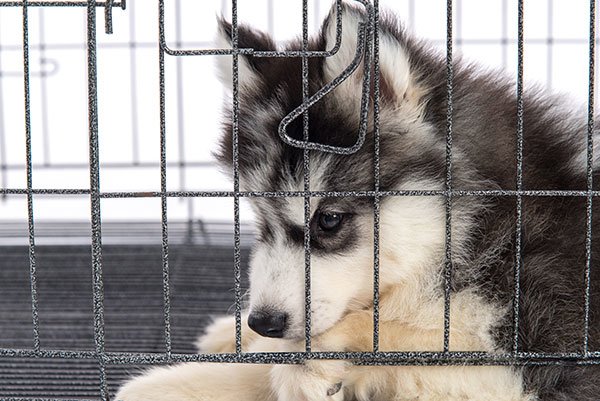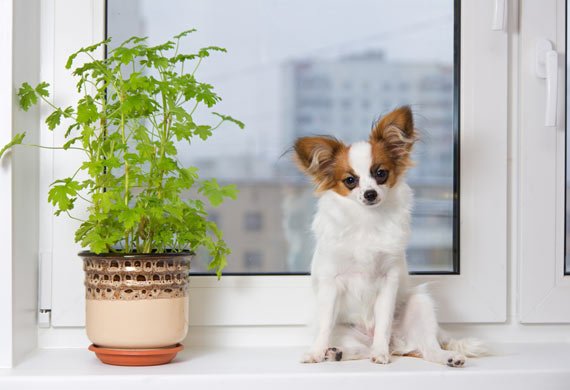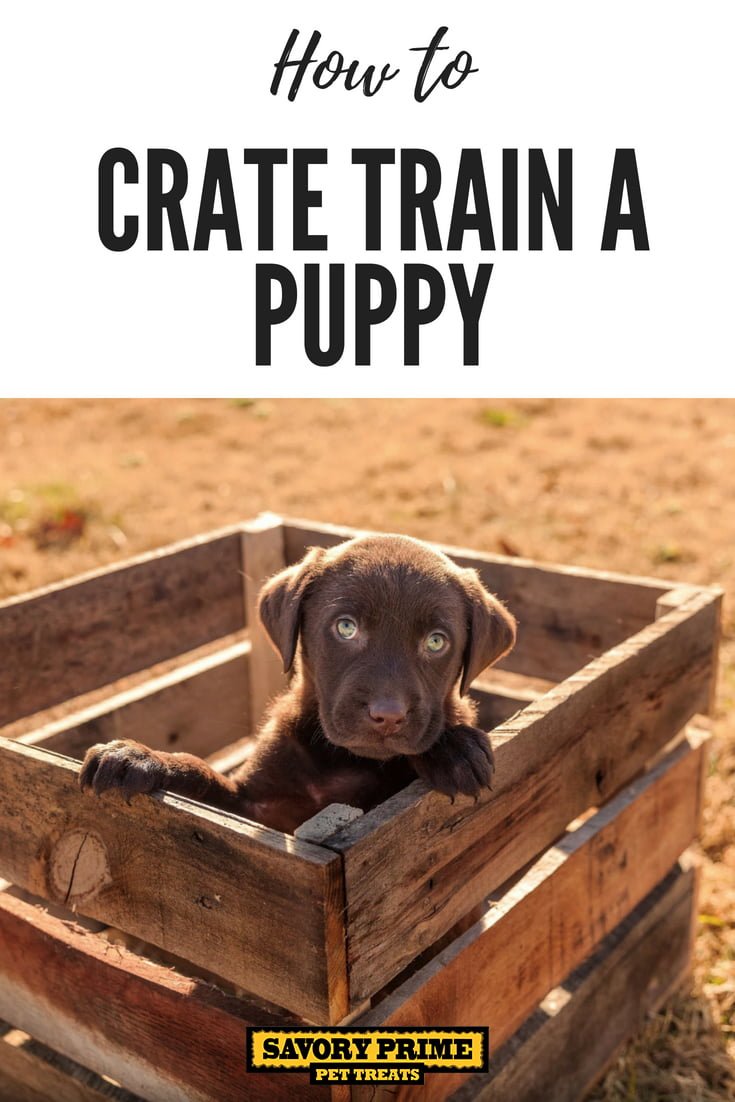Left to their own devices, young puppies can get in a lot of trouble, from soiling the carpet to chewing your favorite pair of shoes. That’s why it’s important to start training early and keep a close eye on them, especially when they’re still learning what’s expected of them. And the best way to do that is to crate train.
Left to their own devices, young puppies can get in a lot of trouble, from soiling the carpet to chewing your favorite pair of shoes. That’s why it’s important to start training early and keep a close eye on them, especially when they’re still learning what’s expected of them. And the best way to do that is to crate train.
First of all, understand that crate training is not cruel. In spite of what some people may have told you, breeders and veterinarians recommend using a crate for your dog from a young age.
For thousands of years, dogs in the wild have sought out small “dens,” where they can feel safe and sheltered while resting, caring for puppies, or recovering from an injury or illness. Giving your puppy his own personal bedroom can help him feel more secure.
This method is also extremely effective for house training while you’re not keeping a hawk eye on them—dogs won’t want to soil their bed but will have little issue with sneaking into another room of the house to go if they’re not yet fully trained.
Finally, crate training can help prevent anxiety. For puppies, overseeing a big house when no one is with them can be overwhelming. When they feel like they have a smaller place they need to “protect,” it’s much more manageable. (Read more on useful ways to use dog crates here.)
Choosing The Best Dog Crate
So now that we’ve sold you on crate training, here’s how to get started:
Choose a well-ventilated crate that is large enough for your puppy to stand up, lie down, and turn around. Remember that your puppy’s crate will have to grow as he does, so purchase a crate that is appropriate for your dog’s expected full-grown size, and use a divider to make the crate smaller for the time being. Many crates available at pet-supply stores include dividers.
Why size matters: A crate that’s too small will be uncomfortable for your dog, but a crate that’s too large may give your dog the space he needs to have an accident without it ruining his bedding. This behavior might encourage future accidents in the crate and around the home.
How To Teach Your Puppy To Love The Crate
The most important part of crate training is making sure your puppy always associates it with a positive experience.
Start by lining it with blankets and place a few toys inside to make it cozy. You can also cover it with a lightweight blanket to mimic a “den” environment. Make sure it is still ventilated and not too hot if you do this.
Bring your puppy to the crate for naps and quiet-time breaks so that he can “unwind” from family chaos. Start in increments of 10 minutes and work up to longer periods. Offer treats when he goes inside, and distraction toys, like a stuffed KONG. For years, this author has been giving her Yorkie a treat every day as soon as he goes into his crate and sits. Now as an adult dog, he runs to his crate each morning in anticipation of the goodie.
Every time you take the puppy out of the crate, take him for a walk so he can eliminate. He’ll get used to the idea that potty time comes after crate time. Remember to praise him after he goes to the bathroom outside.
It’s also helpful to keep puppies in the crate overnight. They may cry the first night or two—in most cases, they are simply adjusting to home without their mom and littermates. Most puppies should be able to sleep through the night without a potty break by 4 months of age, but if you’re in doubt, take him outside.
What Not To Do When Crate Training Your Puppy
Never leave a puppy in his crate all day; he needs several bathroom breaks, as well as playing feeding times. Even though he won’t want to soil his sleeping area, if he is in there for extremely long stretches, he just might. (He can’t help it!) And if he does, it is because his owner has neglected his responsibility, not because the dog has misbehaved.
Never use the crate as punishment. Your dog should see his “room” as a place where only happy, peaceful things happen.
Never lose your patience. Learning takes time. If you follow the above advice and are consistent, your puppy will learn to love his crate for years to come.
Recent Pet Posts
Blog Categories
Product categories
- Accessories (7)
- Chicken & Veggie Wraps (8)
- Grillers Jerky Tenders (4)
- Jerky Treats (10)
- Made in the USA (9)
- Non-Rawhide Treats (28)
- Beggar Bone (11)
- Bully Sticks (4)
- Butcher Bone (4)
- Cod Skin Fish Treats (3)
- Pork Skin Twists (2)
- Pressed Rawhide Bones & Rolls (16)
- Bones & Rolls (6)
- Pressed Rawhide Bulk (6)
- Twist Sticks (4)
- Savory Munchies (13)
- Supreme Bones & Rolls (48)
- American Rawhide Bulk (16)
- Rawhide Bones (14)
- Rawhide Chips (6)
- Rawhide Rolls & Sticks (12)
- Uncategorized (8)





